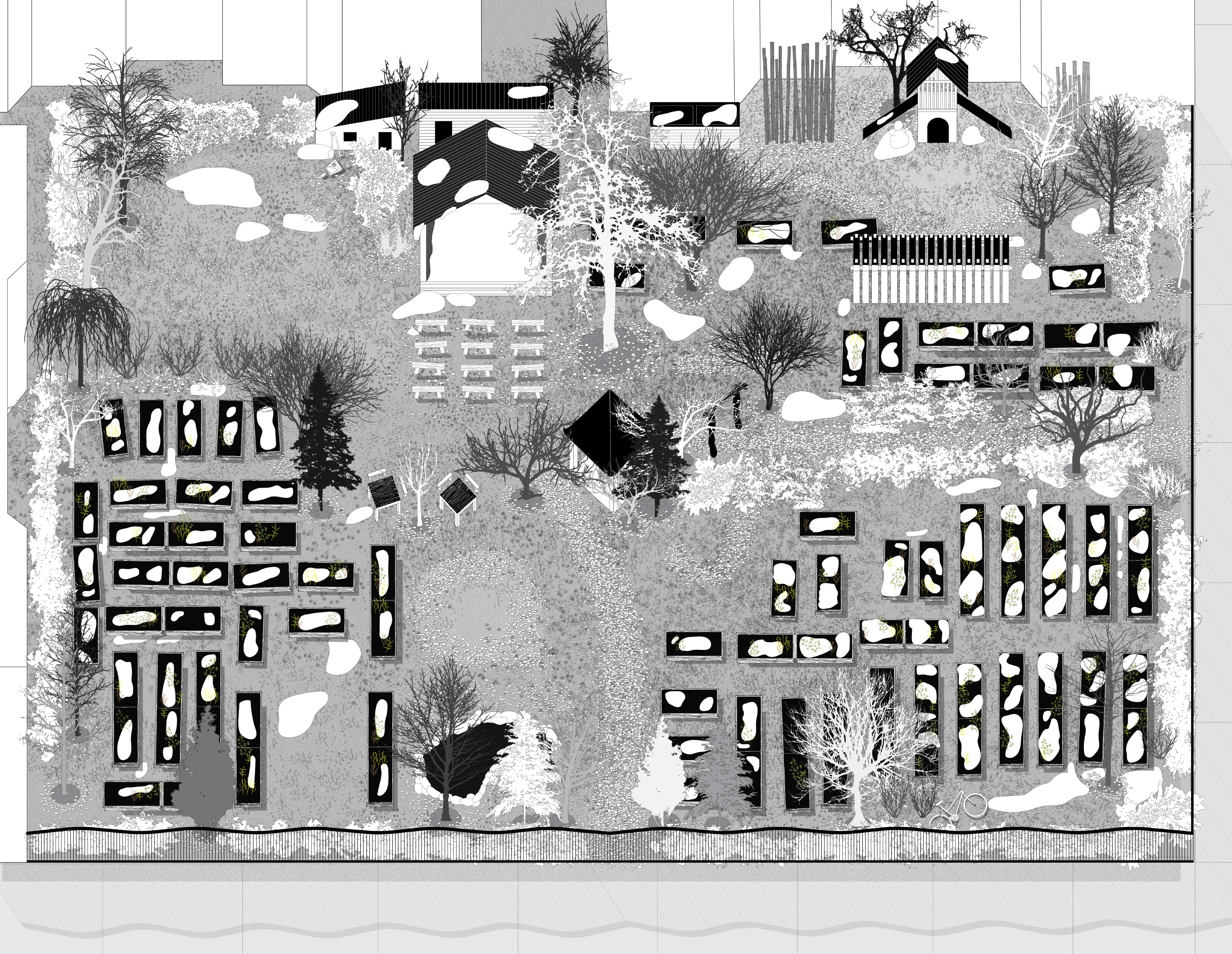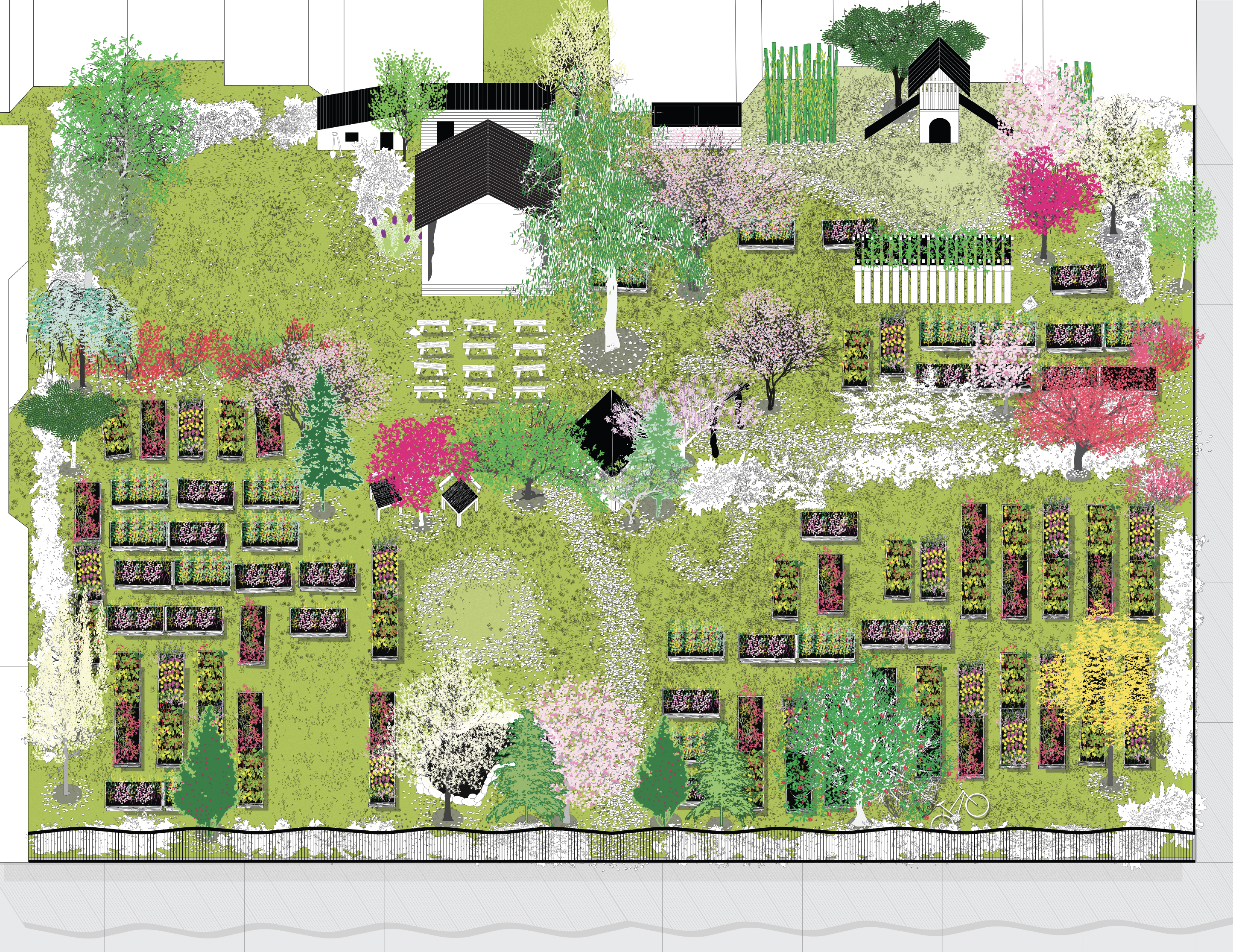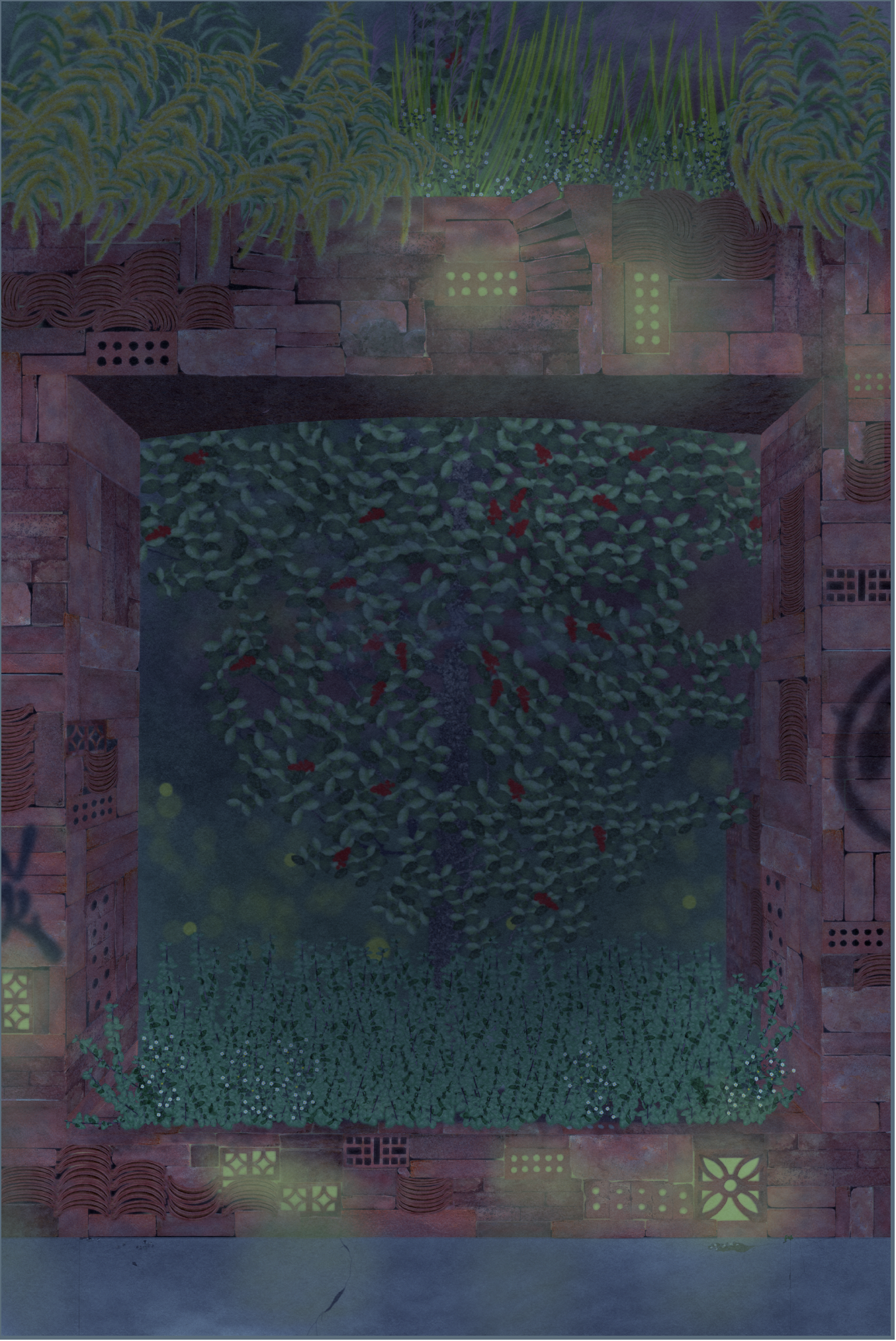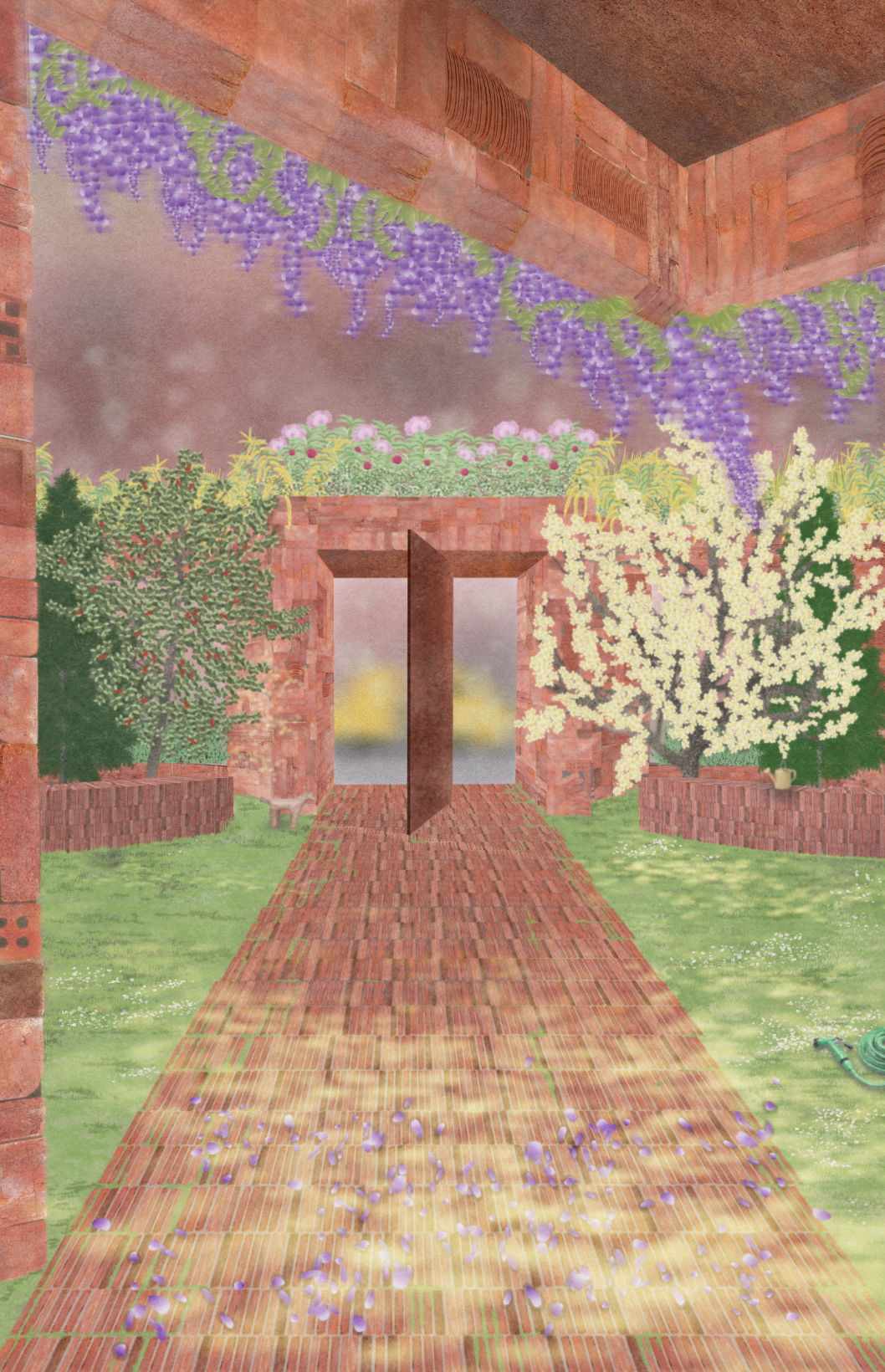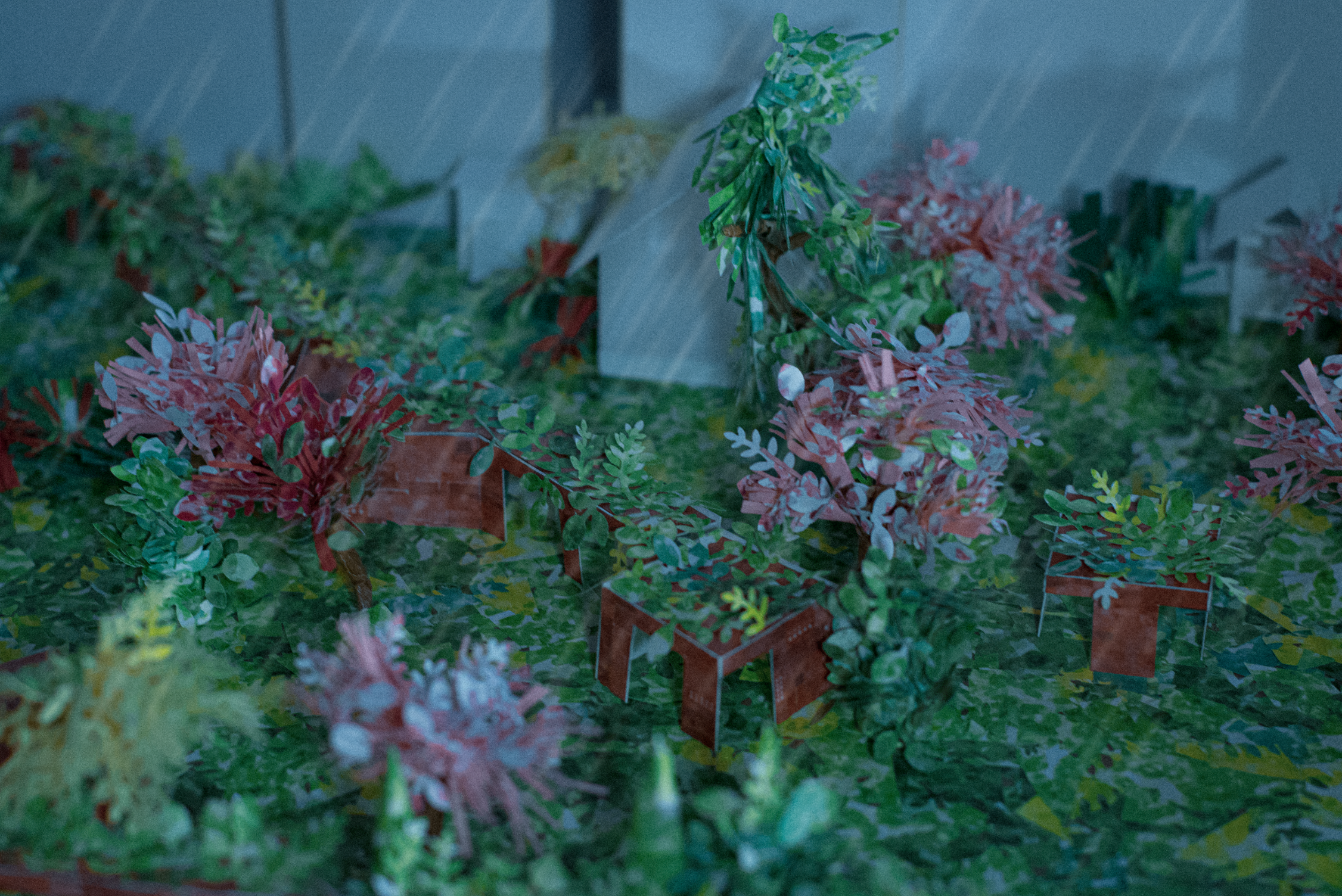Spaces of Performance
Spring 24

Type: Academic
Class: Vacant Spaces (Hilary Sample)
Status: Done
Class: Vacant Spaces (Hilary Sample)
Status: Done
The genesis of the community garden at 6th Street and Avenue B in the Lower East Side of NYC can be traced back to the urban landscape of the 1970s, characterized by widespread neglect and disinvestment leading to the proliferation of vacant lots. This green enclave emerged as a response to the blight of urban decay, symbolizing the community's resilience and agency in reclaiming and repurposing neglected spaces for collective benefit.
While the garden serves as a focal point for communal engagement and social cohesion, its semi-public nature raises pertinent questions regarding the dynamics of inclusion and exclusion within urban communities. The adjacency of the garden to Tompkins Square Park and its proximity to other community gardens further underscores its significance as a spatial node within the neighborhood's socio-cultural fabric.
Amidst threats of development encroaching upon the neighborhood's green spaces in the 1990s, the community mobilized creatively, utilizing art performances as a form of resistance and celebration. These performances, while aesthetically enriching, served a dual purpose of advocating for the preservation of grassroots initiatives and highlighting the intrinsic value of community gardening as a socio-cultural practice.
This performative dimension extends beyond mere spectacle, permeating the everyday practices within the garden space. From the mundane tasks of cultivation to the communal rituals of shared meals, each act of engagement embodies a performative enactment of communal values and aspirations, reaffirming the garden's role as a site of collective identity and solidarity.
This performative dimension extends beyond mere spectacle, permeating the everyday practices within the garden space. From the mundane tasks of cultivation to the communal rituals of shared meals, each act of engagement embodies a performative enactment of communal values and aspirations, reaffirming the garden's role as a site of collective identity and solidarity.
Furthermore, the garden's operational logic challenges conventional economic paradigms, prioritizing principles of communal stewardship and ecological sustainability over profit-driven imperatives. In this sense, the garden becomes a microcosm of alternative economic practices, grounded in principles of mutual aid and cooperative exchange, thereby transcending the boundaries of conventional urban space to embody a vision of community resilience and solidarity.
While the garden serves as a focal point for communal engagement and social cohesion, its semi-public nature raises pertinent questions regarding the dynamics of inclusion and exclusion within urban communities. The adjacency of the garden to Tompkins Square Park and its proximity to other community gardens further underscores its significance as a spatial node within the neighborhood's socio-cultural fabric.
Amidst threats of development encroaching upon the neighborhood's green spaces in the 1990s, the community mobilized creatively, utilizing art performances as a form of resistance and celebration. These performances, while aesthetically enriching, served a dual purpose of advocating for the preservation of grassroots initiatives and highlighting the intrinsic value of community gardening as a socio-cultural practice.
This performative dimension extends beyond mere spectacle, permeating the everyday practices within the garden space. From the mundane tasks of cultivation to the communal rituals of shared meals, each act of engagement embodies a performative enactment of communal values and aspirations, reaffirming the garden's role as a site of collective identity and solidarity.
This performative dimension extends beyond mere spectacle, permeating the everyday practices within the garden space. From the mundane tasks of cultivation to the communal rituals of shared meals, each act of engagement embodies a performative enactment of communal values and aspirations, reaffirming the garden's role as a site of collective identity and solidarity.
Furthermore, the garden's operational logic challenges conventional economic paradigms, prioritizing principles of communal stewardship and ecological sustainability over profit-driven imperatives. In this sense, the garden becomes a microcosm of alternative economic practices, grounded in principles of mutual aid and cooperative exchange, thereby transcending the boundaries of conventional urban space to embody a vision of community resilience and solidarity.
